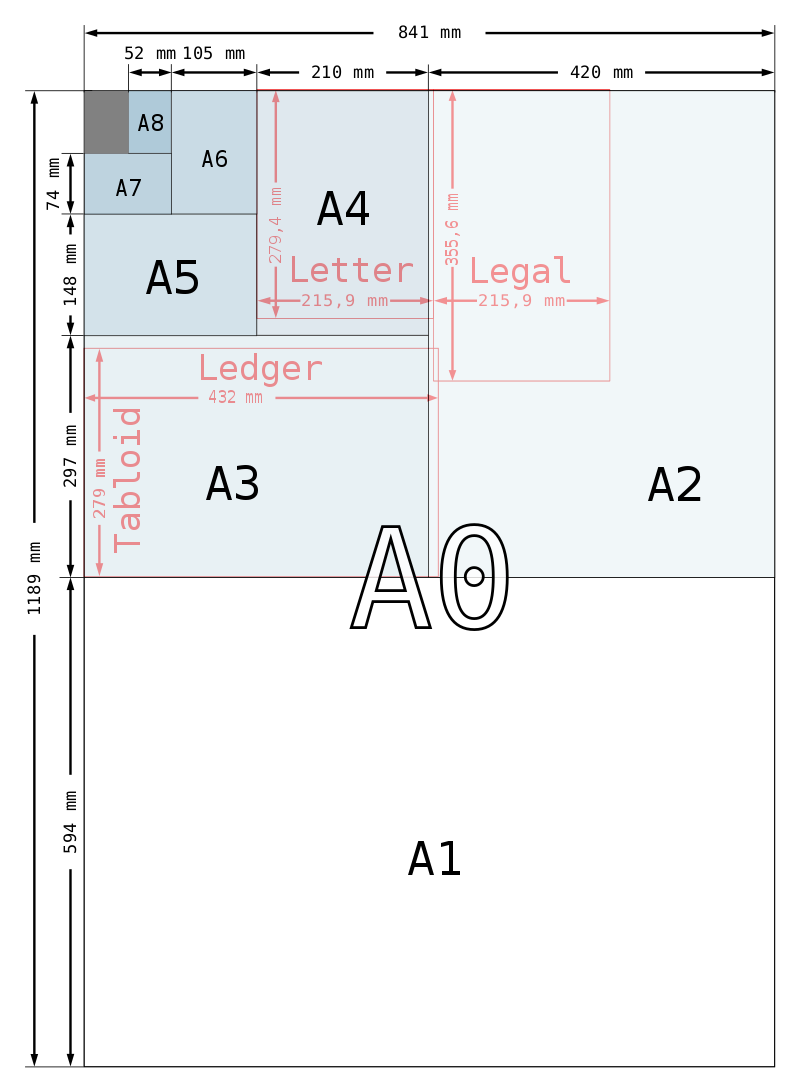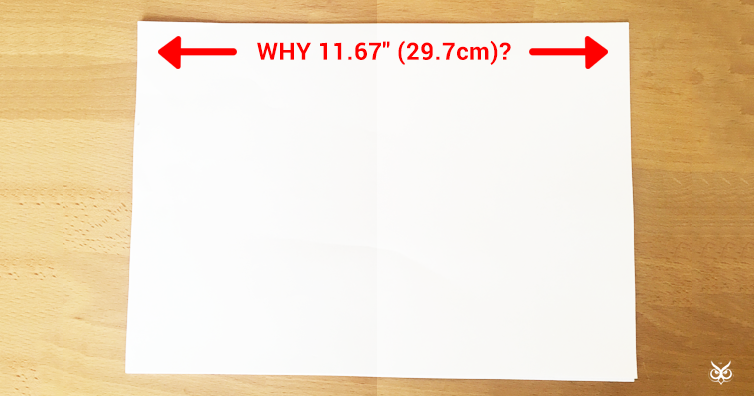Take the most common paper size out there: A4. The dimensions of an A4 paper are exactly 8.25″ x 11.67″ (21cm x 29.7cm). I don’t know about you, but i’ve always found that to be very weird.
I mean, why 11.67″ (29.7cm)? Why not just round up everything and make it either 12″ (30.48cm) or 11.81″ (30cm). Wouldn’t that make more sense?
Well, that’s what i thought, but when i started reading about the origin of the paper sizes, it all made sense. Here’s why. (the article continues after the ad)
A-SERIES
The most popular paper sizes are the ISO A-series which are based on the metric system. This standard was set in 1975 and it was actually based on a standard paper size that was used in Germany since 1922. So, why these indeed weird dimensions on the A0, A1, A2, A3, A4, A5, A6, A7 and A8 papers?
Well, the thing about the A-series is the fact that each paper size is exactly half the size of the previous paper: for example, if you take an A3 sheet and fold it in half you’ll have exactly two A4 papers. One A4 paper will make two A5’s and so on and so forth:

Why is that important? Well, because it makes scaling from one size to another extremely easy as the aspect ratio is not compromised. So everything is based on the largest in the range: A0. And it’s here where everything finally start to make sense.
You see, A0 paper size is exactly 1sq.m in size (don’t forget that this is based on the metric system) with a dimension ratio of 1:1.41. This means that A0 is 84.1cm x 118.9cm (33.1″ × 46.8″). Why that specific ratio and not just 1m x 1m dimensions? Well, because, again, this is the most cost-effective way when you want to produce new sizes from a piece of a larger paper sheets. If you take an A0 paper size and fold it 4 times in half, you’ll end up with an A4 size which is exactly 8.25″ x 11.67″ (21cm x 29.7cm). And this is why we don’t have nicely rounded metric lengths: the 1:1 to √2 ratio does not permit it. This “magic aspect ratio number” (1:1 to √2), was first suggested by Lichtenberg Gesellschaft back in 1786.
LETTER PAPER
Of course, if you are from the US, Canada and Mexico you may not be so familiar with A-series papers, but with letter paper. At 8.5″ x 11″ (21.6cm x 27.9cm), a letter page is similar to A4 but slightly wider and shorter. Although in use since the 1920s, it became the official standard paper size for the US government in the 1980s.
In this popular range, the largest piece of paper is 4 times bigger than Letter (17″ x 22″). It’s specific size is actually a legacy from a few hundred years ago when manufacturers were making paper by hand and therefore, had to face the limitation of achieving something “an average arm” length. This paper was then halved and quartered to make Tabloid and Letter sizes.
Of course, unlike the A-series, this heritage does not have a “magic” aspect ratio that allows for smaller pages to have the exact same proportion. This is why, as global business and globalization are on the rise, more and more people in North America are now switching to the A-series because, to be honest, it actually makes more sense.
And now you know why paper sizes are the way they are.
If you like what you read, then you will definitely love this one: Why Do Paper Cuts Hurt Worse Than Regular Cuts?
Photo: I’m A Useless Info Junkie
Photoshop: I’m A Useless Info Junkie
Sources: International standard paper sizes | A history of A4 and Letter paper sizes | Lichtenberg’s letter to Johann Beckmann



